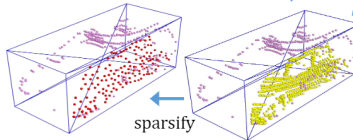# 顶层配置信息管理服务器级别行为
worker_processes 1;# event指令与事件模型有关,配置处理连接有关信息
events {worker_connections 1024;
}# http指令处理http请求
http {# mime type映射include mime.types;default_type application/octet-stream;sendfile on;#tcp_nopush on;#keepalive_timeout 0;keepalive_timeout 65;#gzip on;# server 表示一个虚拟主机,一台服务器可配置多个虚拟主机server {# 监听端口listen 80;# 识别的域名server_name localhost;# 一个关键设置,与url参数乱码问题有关charset utf-8;#access_log logs/host.access.log main;#location表达式:#syntax: location [=|~|~*|^~|@] /uri/ { … }#分为两种匹配模式,普通字符串匹配,正则匹配#无开头引导字符或以=开头表示普通字符串匹配#以~或~* 开头表示正则匹配,~*表示不区分大小写#多个location时匹配规则#总体是先普通后正则原则,只识别URI部分,例如请求为/test/1/abc.do?arg=xxx#1. 先查找是否有=开头的精确匹配,即location = /test/1/abc.do {...}#2. 再查找普通匹配,以 最大前缀 为规则,如有以下两个location# location /test/ {...}# location /test/1/ {...}# 则匹配后一项#3. 匹配到一个普通格式后,搜索并未结束,而是暂存当前结果,并继续再搜索正则模式#4. 在所有正则模式location中找到第一个匹配项后,以此匹配项为最终结果# 所以正则匹配项匹配规则受定义前后顺序影响,但普通匹配不会#5. 如果未找到正则匹配项,则以3中缓存的结果为最终结果#6. 如果一个匹配都没有,返回404#location =/ {...} 与 location / {...} 的差别#前一个是精确匹配,只响应/请求,所有/xxx类请求不会以前缀匹配形式匹配到它#而后一个正相反,所有请求必然都是以/开头,所以没有其它匹配结果时一定会执行到它#location ^~ / {...} ^~意思是非正则,表示匹配到此模式后不再继续正则搜索#所有如果这样配置,相当于关闭了正则匹配功能#因为一个请求在普通匹配规则下没得到其它普通匹配结果时,最终匹配到这里#而这个^~指令又相当于不允许正则,相当于匹配到此为止location / {root html;index index.html index.htm;# deny all; 拒绝请求,返回403# allow all; 允许请求}location /test/ {deny all;}location ~ /test/.+\.jsp$ {proxy_pass http://192.168.1.62:8080;}location ~ \.jsp$ {proxy_pass http://192.168.1.61:8080;}# 定义各类错误页error_page 404 /404.html;# redirect server error pages to the static page /50x.html#error_page 500 502 503 504 /50x.html;location = /50x.html {root html;}# @类似于变量定义# error_page 403 http://www.jikexueyuan.com这种定义不允许,所以利用@实现error_page 403 @page403;location @page403 {proxy_pass http://www.jikexueyuan.com;}}# another virtual host using mix of IP-, name-, and port-based configurationserver {listen 80;#listen 9090server_name www.test.com test.com other.cc;location / {# root d:\\test; 注意,win下d:\test因转义符问题不允许root d:/testindex index.html index.htm;}}
}



![[ruby on rails] passenger+nginx 部署rails](https://img-blog.csdnimg.cn/955ea138599c4145897de8c17df6c6ab.png)


